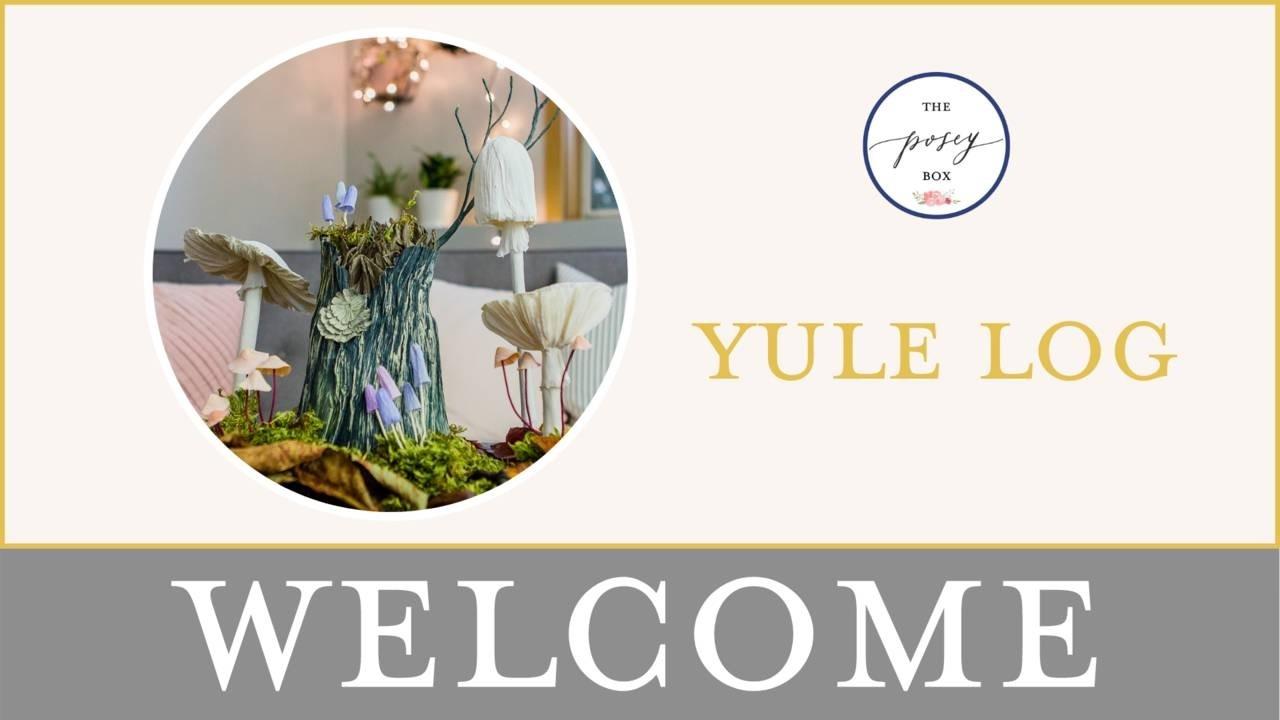The story behind the Yule Log Tutorial with Kate Alarcon


The yule log (or Buche de Noel in French) has a fascinating history. It’s a custom that is believed to have originated in European pagan midwinter festivals, in which communities would come together to light bonfires in celebration of the shortest day of the year and the longer days to come. Over time, this tradition evolved, and it became customary to burn a huge log in the fireplace to create a bright, warm, cozy Christmas celebration. Today, it’s easy to forget that your average peasant wouldn’t have had access to much light during those longer winter nights. Wood takes time and effort to gather, and candles cost money. To fill a night with blazing light would have seemed like a rare luxury.
You may be more familiar with the yule log, (or Buche de Noel in French), as a sometimes elegant, sometimes delightfully quirky holiday desert. Imaginative bakers decorate frosted sponge cake rolls to look like logs, often adorning the beautiful cakes with meringue mushrooms and marzipan fruit. This custom, thought to have begun in the nineteenth century, recreates the sense of gathering around the yule log, now at the table instead of the hearth.

Quynh and I, both ecstatic transplants to the pacific northwest, have been obsessed with this project. We live in a wonderland of mossy, decaying logs—as colonies of mushrooms pop up in the fall, there is inspiration everywhere! We began plotting it out months ago: October, we made big, white mushrooms and learned to make tiny Mycena mushrooms in the study group. In November, we learned to make knobbly, realistic branches for our pink magnolia. This month, we’re learning how to build the underlying log structure and how to create realistic bark. It all comes together in a tribute to the magic of a forest in winter. But for other seasons, add buds or flowers or fruit to the branches, change the color and size of the mushrooms, create tangles of roots—this project is infinitely adaptable.
Our hope is that as you make this or any of the other projects in our collection, you find ways to adapt our designs and techniques and express your own creative vision. And most of all that you share what you’ve discovered!
Tips:
The acrylic paint is what gives the heavy crepe the structure it needs to replicate a bark surface. Make sure that your paper is thoroughly coated, and that you loosely gather it together as shown in the video before you let it dry thoroughly.
To highlight the bark’s texture and create surface detail, gently, brush the pale sage paint over the ridges of the bark. Don’t apply a heavy coat and let it saturate into the paper.
To build out this presentation, you can create partial roots that seem to rise out of the ground next to the log. If you make an assortment of these exposed roots, you can expand the log display to fill a larger space.
If you have any questions, please reach out to us at [email protected]!
Love,
Kate!

50% Complete
Two Step
Lorem ipsum dolor sit amet, consectetur adipiscing elit, sed do eiusmod tempor incididunt ut labore et dolore magna aliqua.
